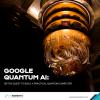
Breaking News
 Trump's Corporate Favor Factory
Trump's Corporate Favor Factory
 Google Quantum Supremacy And Artificial Intelligence
Google Quantum Supremacy And Artificial Intelligence
 NASA Just Activated the Earth Defense Force Ahead of 3I/Atlas Arrival
NASA Just Activated the Earth Defense Force Ahead of 3I/Atlas Arrival
 Dubai: The Ugly Life Under Technocracy
Dubai: The Ugly Life Under Technocracy
Top Tech News
 Graphene Dream Becomes a Reality as Miracle Material Enters Production for Better Chips, Batteries
Graphene Dream Becomes a Reality as Miracle Material Enters Production for Better Chips, Batteries
 Virtual Fencing May Allow Thousands More Cattle to Be Ranched on Land Rather Than in Barns
Virtual Fencing May Allow Thousands More Cattle to Be Ranched on Land Rather Than in Barns
 Prominent Personalities Sign Letter Seeking Ban On 'Development Of Superintelligence'
Prominent Personalities Sign Letter Seeking Ban On 'Development Of Superintelligence'
 Why 'Mirror Life' Is Causing Some Genetic Scientists To Freak Out
Why 'Mirror Life' Is Causing Some Genetic Scientists To Freak Out
 Retina e-paper promises screens 'visually indistinguishable from reality'
Retina e-paper promises screens 'visually indistinguishable from reality'
 Scientists baffled as interstellar visitor appears to reverse thrust before vanishing behind the sun
Scientists baffled as interstellar visitor appears to reverse thrust before vanishing behind the sun
 Future of Satellite of Direct to Cellphone
Future of Satellite of Direct to Cellphone
 Amazon goes nuclear with new modular reactor plant
Amazon goes nuclear with new modular reactor plant
 China Is Making 800-Mile EV Batteries. Here's Why America Can't Have Them
China Is Making 800-Mile EV Batteries. Here's Why America Can't Have Them
Radioactive DIAMOND battery powered by nuclear waste 'will run for 28,000 years' ...

A battery powered by nuclear waste could keep a spaceship or hospital operating for 28,000 years without needing to be recharged or replaced, its developers claim.
The radioactive battery is 'completely safe' for humans, according to California-based Nano Diamond Battery (NDB), who say it will 'change the world'.
The firm hopes to start selling the battery to commercial partners, including space agencies for long duration missions, within the next two years.
NDB are also working on a consumer version that could run a smartphone or electric car for up to a decade without requiring a charge.
No details on pricing have been revealed by the technology startup, who say it is still in development phase.
The technology involves combining radioactive isotopes taken from nuclear waste with layers of panelled nano diamonds stacked in a battery cell.
Extremely good heat conductance of the microscopic diamonds acts to move heat away from the radioactive isotopes so quickly the transaction generates electricity.
It is based on a technology called diamond nuclear voltaic (DNV) presented by scientists in 2016 from the University of Bristol using waste graphite blocks.
This technology is best suited for devices that need a slow trickle of electricity, consistently over a long period of time due to low energy production.

 China Innovates: Transforming Sand into Paper
China Innovates: Transforming Sand into Paper

